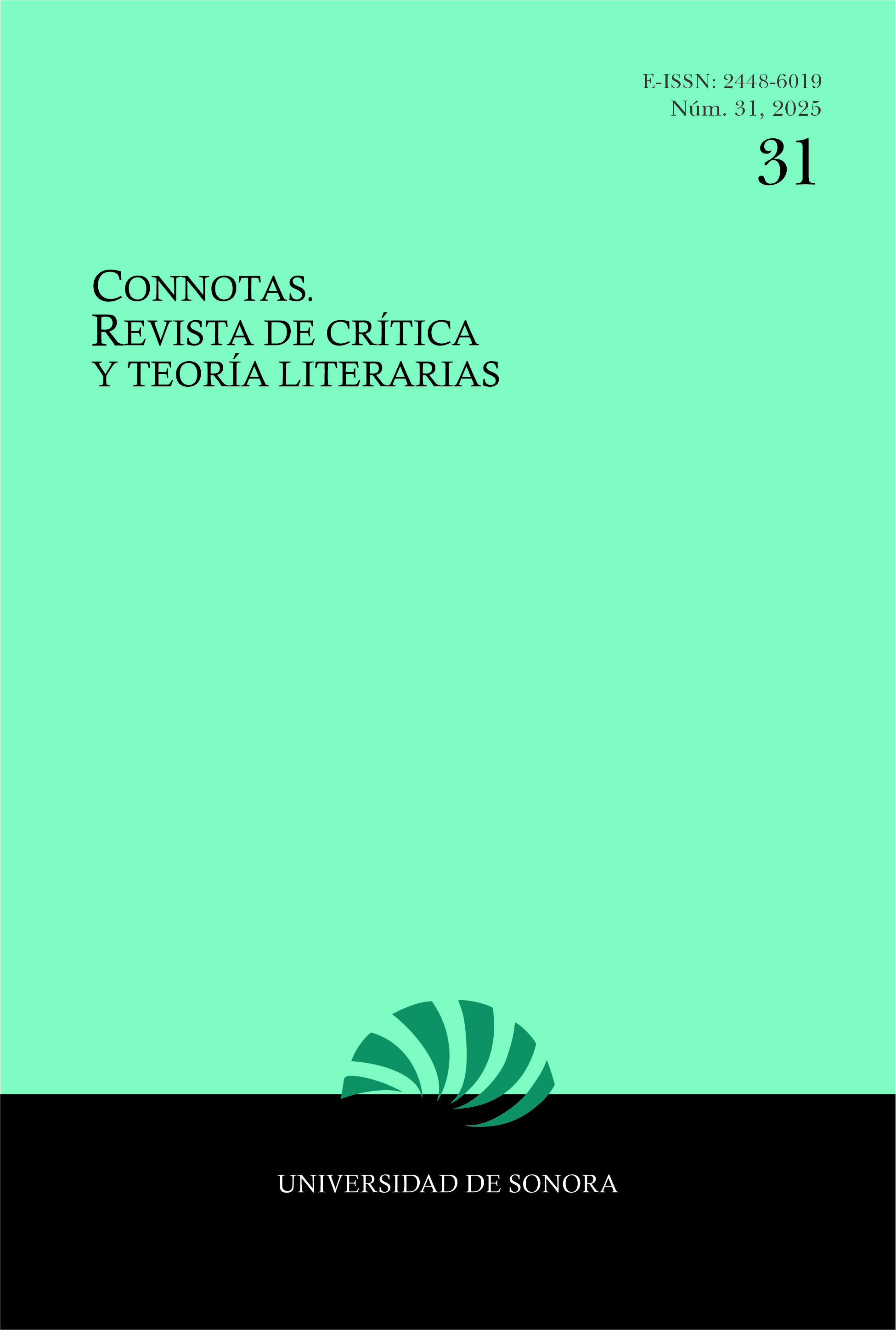The city through the girondino eye: humor in Veinte poemas para ser leídos en el tranvía
DOI:
https://doi.org/10.36798/critlit.i31.529Keywords:
Girondo, humorism, Argentine poetry, avant-gardeAbstract
Several researchers and critics insist that the “sense of humor” in Oliverio Girondo’s work is one of his main qualities. However, this has rarely been examined in detail, since they have preferred to interpret the more “cultured” features of Girondo’s work. In this paper, starting from the categorizations around the aesthetics of laughter, we analyze how the conception of the city, as well as the notions of the modern and the new are constructed from humor in Veinte poemas para ser leídos en el tranvía (1922). It will also show how this vision of the new ¾which stars from the finite, the small or the insignificant— has a deeper intention than mockery itself; it is about degrading, relativizing, deconstructing and straing everything considered sublime, grandiose or sacred, which, ends up being an affront to tradition and the dominant aesthetics of the time.
Downloads
References
Bajtín, Mijail. “Quince tesis sobre François Rabelais en la historia del realismo (1946)”. Mijail Bajtín: Rabelais, la risa y la cultura popular, compilado por Carlos Antonio Aguirre, Desde Abajo, 2019, pp. 49-64.
Beltrán Almería, Luis. Anatomía de la risa. Ediciones sin nombre / Conacyt / Universidad de Sonora, 2011.
____. La imaginación literaria. La seriedad y la risa en la literatura de occidente. Montesinos, 2002.
Bueno, Mónica. “Los tonos de la vanguardia: poesía y ciudad”. Variaciones sobre Borges, no. 35, 2013, pp. 111-142.
Camurati, Francesca. “Veinte poemas. Veinte postales. Sobre el primer libro de poemas de Oliverio Girondo”. Cahiers du monde hispanique et luso-brésilien, no. 85, 2005, pp. 205-221, https://www.persee.fr/doc/carav_1147-6753_2005_num_85_1_2910. DOI: https://doi.org/10.3406/carav.2005.2910
“De la poesía fonética a la poesía sonora (vanguardias históricas del siglo XX)”. Merz Mail, https://www.merzmail.net/fonetica.htm.
Eagleton, Terry. Humor. Penguin Random House, 2021.
Fernández, Macedonio. Teoría de la humorística. Teorías. Obras completas: Tomo III. Ediciones Corregidor, 1974, pp. 229-308.
García-Blásquez Bedoya, Héctor. “El Romanticismo”. Runa Yachachiy: revista digital, no. I, 2016, https://alberdi.de/ROMANHECIS2016.pdf.
Girondo, Oliverio. Manifiesto Martín Fierro. Las vanguardias literarias en Hispanoamérica (manifiestos, proclamas y otros escritos), compilado por Hugo J. Verani, Fondo de Cultura Económica, pp. 272-273.
____. Veinte poemas para ser leídos en el tranvía. Calcomanías. Losada, 2007.
Gómez de la Serna, Ramón. Humorismo. Casimiro, 2014.
Hazlitt, William. “Sobre el ingenio y el humor (Conferencias sobre los escritores cómicos ingleses, 1818)”. Cuadernos de información y comunicación, no. 7, 2002, pp. 69-94, https://revistas.ucm.es/index.php/CIYC/article/view/CIYC0202110069A/7338.
Mariátegui, José Carlos. “Oliverio Girondo”. Oliverio Girondo: Obra completa. Conaculta, 1999, pp. 614-616
Márquez Rodilla, Cristina. “El falo, símbolo privilegiado del psicoanálisis”. Trama y fondo: revista de cultura, no. 22, 2007, pp. 45-56.
Masiello, Francine. “Oliverio Girondo: naturaleza y artificio”. Revista de crítica literaria latinoamericana, año 24, no. 48, 1998, pp. 85-98. DOI: https://doi.org/10.2307/4530996
Molina, Enrique. Hacia el fuego central o la poesía de Oliverio Girondo. Obras completas de Oliverio Girondo. Losada, 1968, pp. 7-40
Munguía Zatarain, Martha Elena. La risa en la literatura mexicana (apuntes de poética). Iberoamericana Editorial / Vervuert, 2012. DOI: https://doi.org/10.31819/9783954871148
Muschietti, Delfina. “La fractura ideológica en los primeros textos de Oliverio Girondo”. Filología, no. 20.1, 1985, pp. 153-169.
Pirandello, Luigi. El humorismo. Ediciones elaleph.com, 1999.
Ritcher, Jean Paul. “Del humorismo”. Cuadernos de información y comunicación, no. 7, 2002, pp. 53-68, https://revistas.ucm.es/index.php/CIYC/article/view/CIYC0202110053A/7337.
Sarlo, Beatriz. Modernidad periférica. Buenos Aires 1920 y 1930. Siglo XXI, 2020.
Schwartz, Jorge. “La trayectoria masmedular de Oliverio Girondo”. Cuadernos hispanoamericanos, 1966, jun. 1966, pp. 553-554.
____. Vanguardia y cosmopolitismo en la década del veinte: Oliverio Girondo y Oswald de Andrade. Beatriz Vierbo Editora, 2002.
Utrera Torremocha, María Victoria. “Ritmo y sintaxis en el verso libre”. Rythmica. Revista española de métrica comparada, no. 1, feb. 2003, pp. 303-333, https://doi.org/10.5944/rhythmica.3958. DOI: https://doi.org/10.5944/rhythmica.3958
Downloads
Published
How to Cite
Issue
Section
License
The authors always maintain the moral and patrimonial rights of their work. They only grant the non-exclusive license of use to Connotas for their first publication. Therefore, the authors may make other independent and additional contractual agreements for the publication of their article, review or other text originally published in Connotas or with modifications (including the title) as long as they clearly indicate that the paper was first published in Connotas. Revista de crítica y teoría literarias. Connotas undertakes not to make commercial use of the texts it receives or publishes.
See also "Copyright and Licences".





